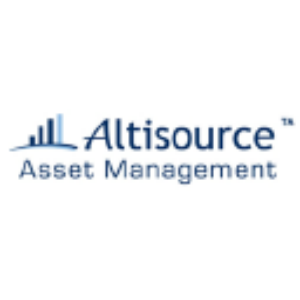Altisource Asset Management Corporation Letter to Shareholders
CHRISTIANSTED,
Dear Fellow Shareholders:
From my perspective, one of the most important assets of AAMC is our interest in the EV Alpha Control System business. Our interest in the Alpha Control System could be worth zero or a considerable value, depending on our ability to execute the strategy. My task is to control expenditures to provide AAMC the time to realize the potential of our assets. The goal is to reduce operating expenditures below
Inquiries have been received concerning the progress reports we have posted regarding the Alpha Control System. Specifically, the questions about these reports, which are prepared by our
To clarify, the redacted information falls into three categories:
- Potential additional claims which could potentially strengthen the patent, the public disclosure of which could jeopardize such claims.
- Sensitive commercial information that could affect our negotiation positions such as motor selection and the identification of potential counterparties.
- Preliminary scientific data upon which Seabird wishes to do further analysis to confirm accuracy.
Where are we with the Alpha Control System? We are in the commercialization phase of the project.
-
First, Seabird concluded an exhaustive search of all available motors and have arrived at a final selection. This has gone better than expected and has identified an additional significant market where we can provide substantial economic benefit – delivery trucks. Seabird achieved a 16 -
24% increase in range for in-city driving. UPS drivers’ total compensation is$170,000 - Second, the demonstrator vehicle has been acquired and engineering is preparing the vehicle for before and after testing of the Alpha Control System.
- Third, the initial commercial presentation has been developed which will be iterated as we receive feedback from potential customers.
Generally, we are on track for the 9-to-18-month sales timeline. A couple of weeks ahead or behind on the various work streams. We stress that even after we sign a contract, it will be several years until Alpha will be integrated into the production process.
Respectfully,
Bill Erbey
Chairman
About AAMC
AAMC is a private credit provider that originates alternative assets to provide liquidity and capital to under-served markets. AAMC works to employ capital light operating strategies that have historically been implemented across a variety of industry sectors. The Company’s principal line of business going forward is the development and licensing of a control system which increases the efficiency of electric vehicles. Under the PTLA, the Company acquired a non-exclusive license for a set of patents for a control system which seeks to optimize the efficiency of electric vehicles. Additional information is available at www.altisourceamc.com.
Forward-looking Statements
This press release and the attachments thereto contain “forward-looking statements” within the meaning of Section 27A of the Securities Act of 1933, as amended (the “Securities Act”), and Section 21E of the Securities Exchange Act of 1934, as amended (the “Exchange Act”). In some cases, you can identify forward-looking statements by the use of forward-looking terminology such as “may,” “will,” “should,” “expects,” “intends,” “plans,” “anticipates,” “believes,” “estimates,” “targets,” “predicts,” or “potential,” or the negative of these words and phrases or similar words or phrases that are predictions of or indicate future events or trends and that do not relate solely to historical matters. You can also identify forward-looking statements by discussions of strategy, plans or intentions. The forward-looking statements contained in this release reflect our current views about future events and are subject to numerous known and unknown risks, uncertainties, assumptions and changes in circumstances that may cause our actual business, operations, results or financial condition to differ significantly from those expressed in any forward-looking statement.
Factors that may materially affect such forward-looking statements include, but are not limited to:
- Our ability to develop and implement new businesses or, to the extent such businesses are developed, our ability to make them successful or sustain the performance of any such businesses;
- Current inflationary economic and macro-economic and geopolitical events, and market conditions that can affect our businesses;
- Our ability to develop and implement a new business with respect to the PTLA and that the Company will achieve its expectations with respect to the patents and other intellectual property associated therewith;
- Our ability to monetize our existing loan portfolio; and
- The failure of our information technology systems, a breach thereto, and our ability to integrate and improve those systems at a pace fast enough to keep up with competitors and security threats.
While forward-looking statements reflect our good faith beliefs, assumptions, and expectations, they are not guarantees of future performance. Such forward-looking statements speak only as of their respective dates, and we assume no obligation to update them to reflect changes in underlying assumptions, new information or otherwise. For a further discussion of these and other factors that could cause our future results to differ materially from any forward-looking statements contained herein, please refer to the section “Item 1A. Risk Factors” contained in the Company’s 2023 Annual Report on Form 10-K.
View source version on businesswire.com: https://www.businesswire.com/news/home/20240517390710/en/
Charles Frischer
T: +1-813-474-9047
E: charles.frischer@altisourceamc.com
Source: Altisource Asset Management Corporation







